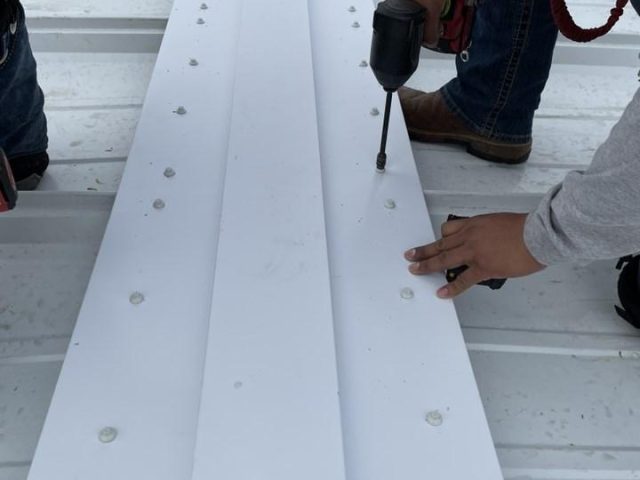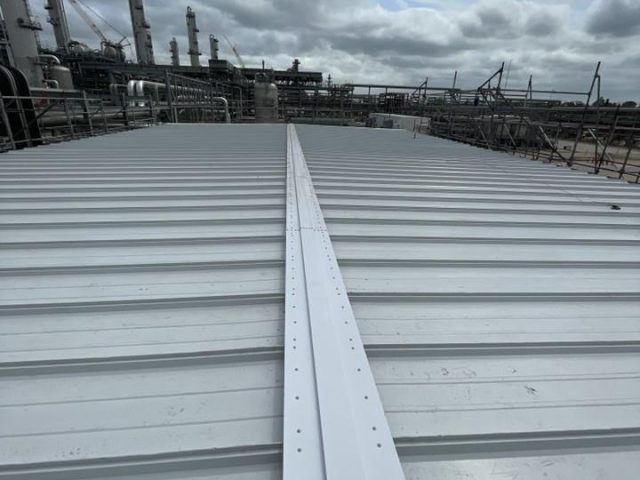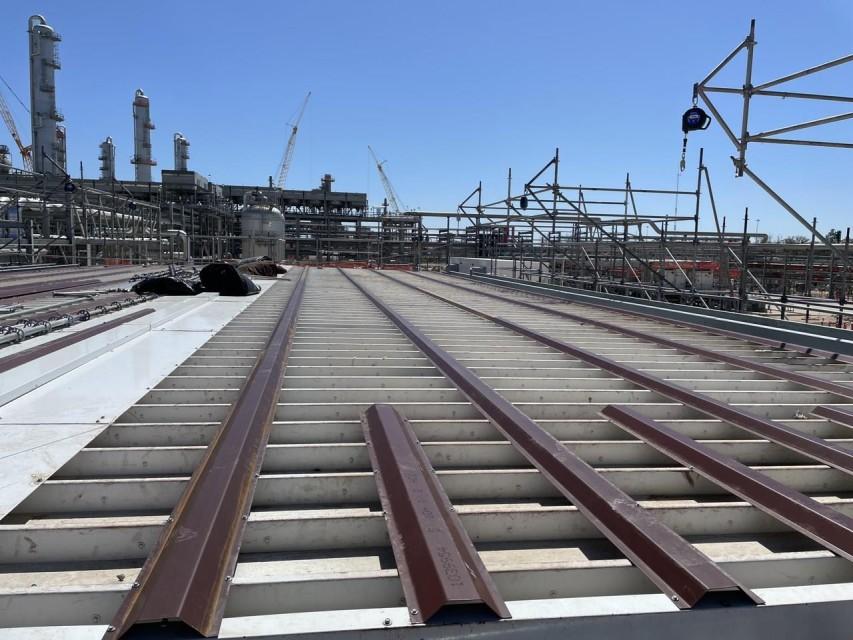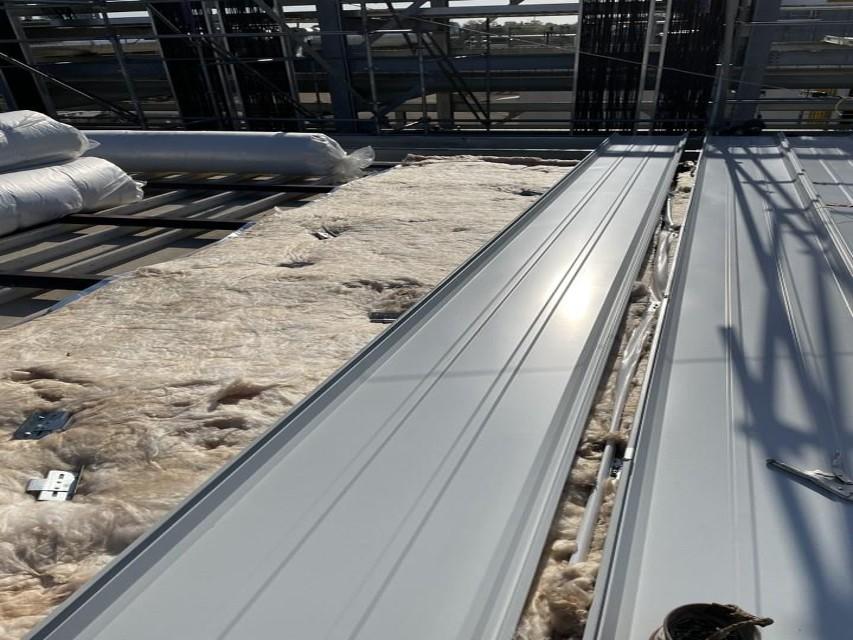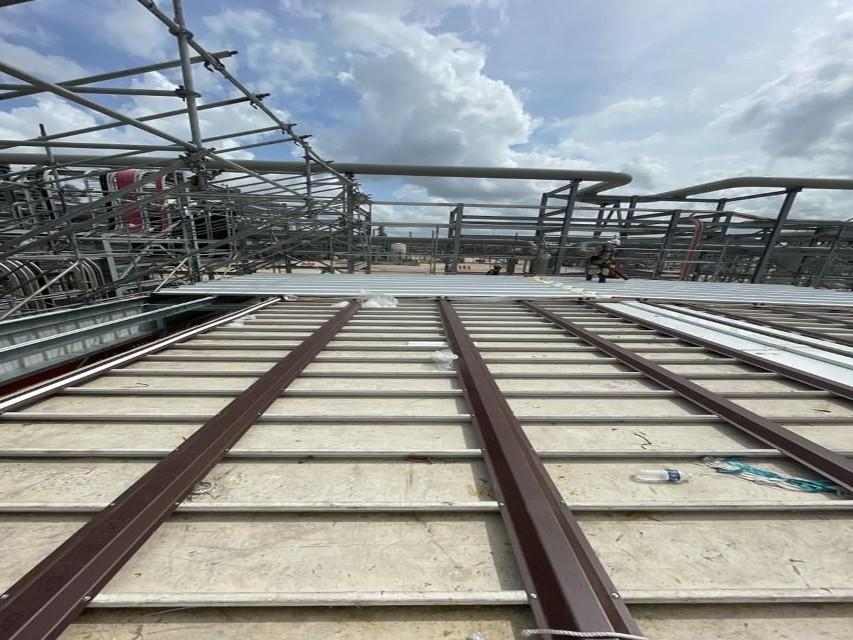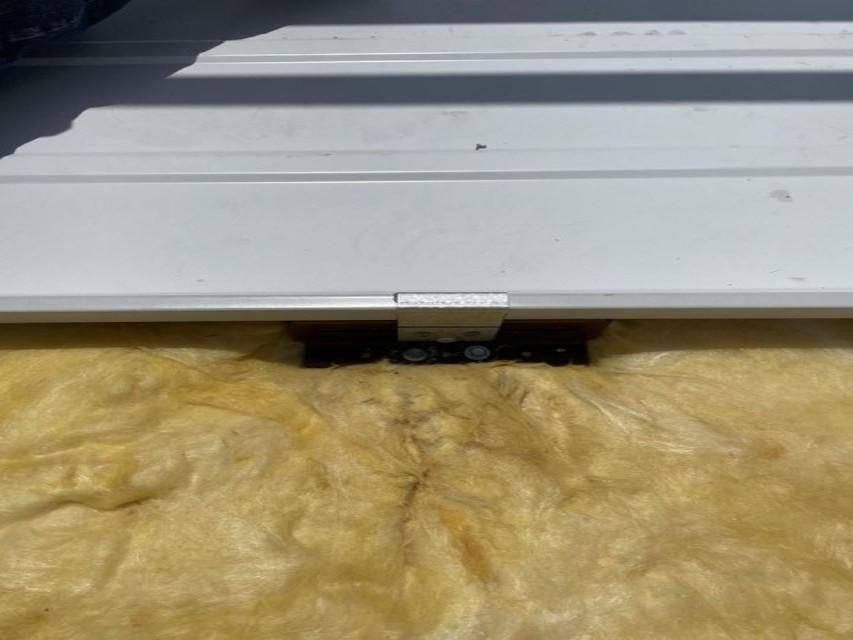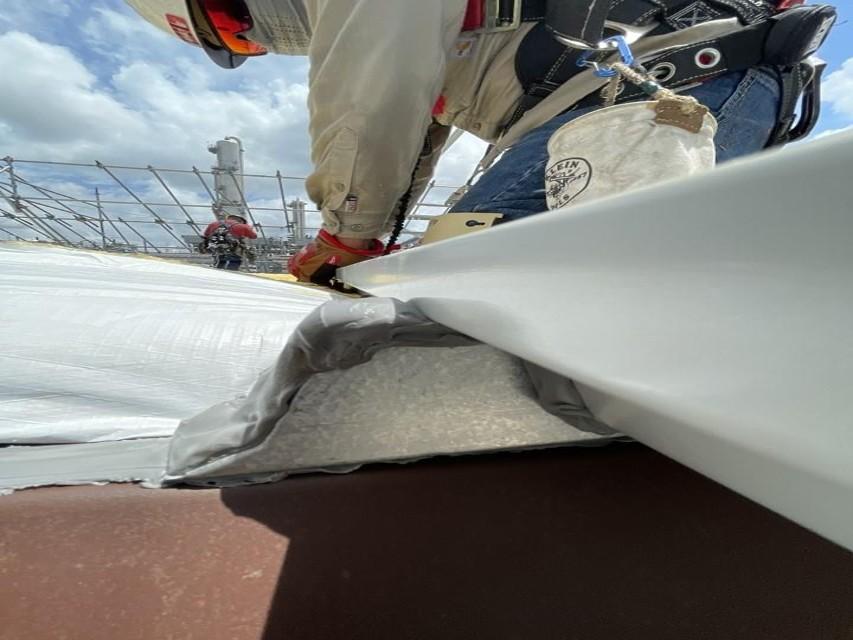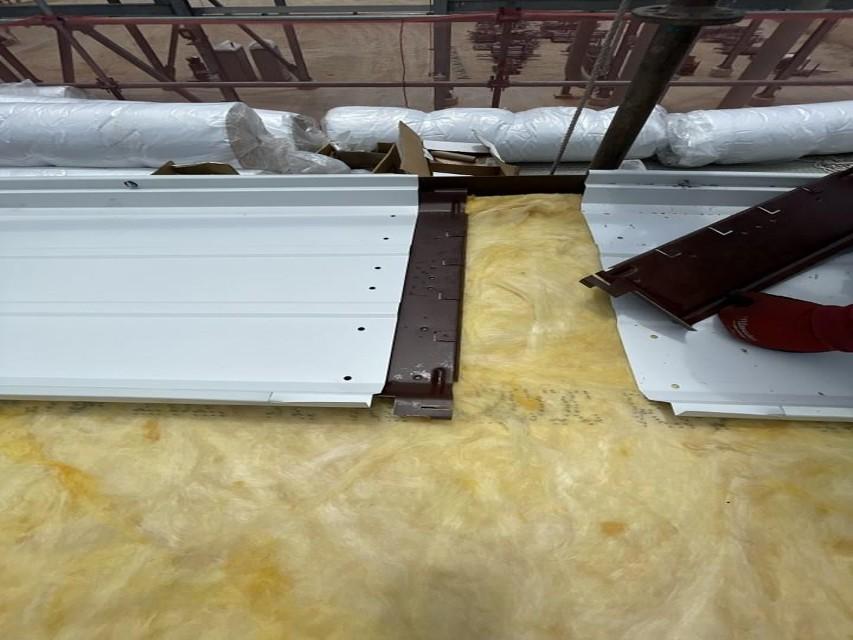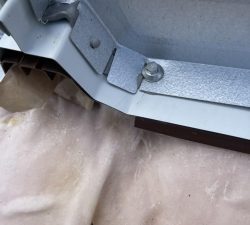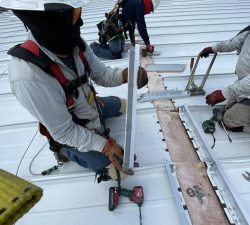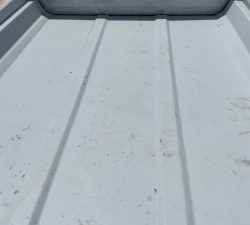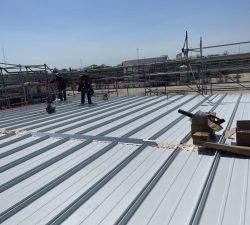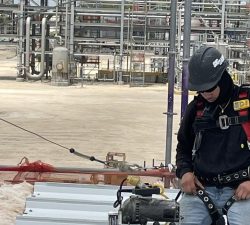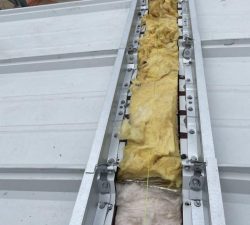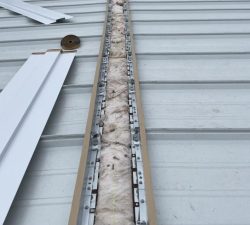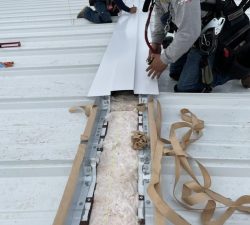Standing Seam Metal Roof Installation
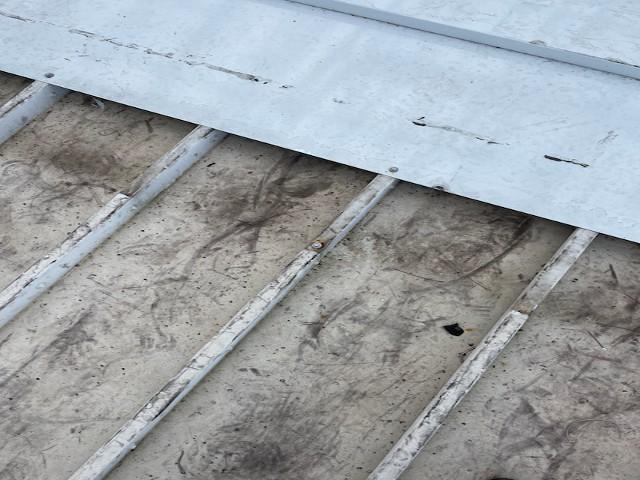
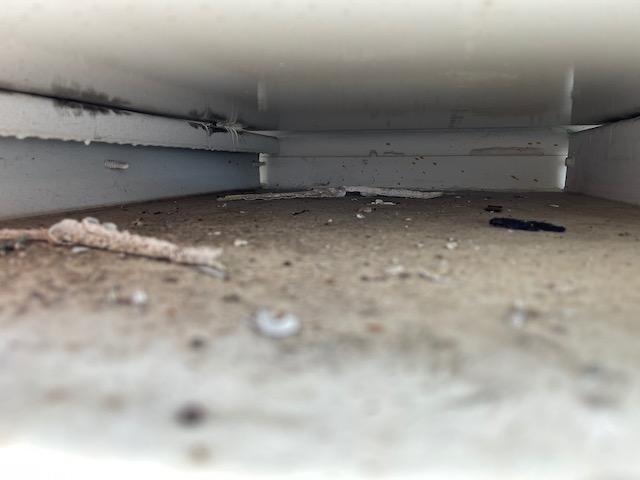
Problem: a leaking standing seam metal roof
The ridge cap of the original roof was not properly installed and the roof was constantly leaking.
Side view of the existing roof. The space between the ridge cap and metal panels was open. This allowed wind blown water to enter the building.
Installing a standing seam roof over the original roof
When the metal closures are installed butyl caulk tape is installed between the closure and the panel.
The closures are fastened in place. The fasteners are installed in an area that won’t leak.
All the fasteners are hidden. A properly installed standing seam roof should not leak.
A panel seamer is used to seal the panel seams.
The ridge cap seams are sealed using two rows of caulk tape and urethane caulk.
Finished installation of the ridge cap.
